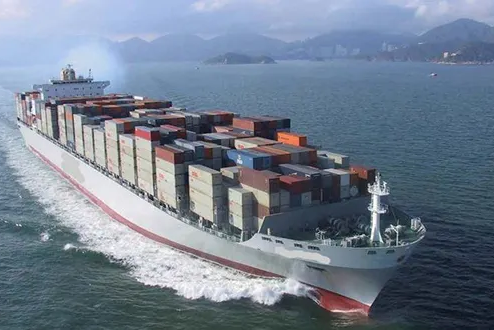Kontajnerová doprava je strediskom globálneho obchodu, umožňujúc efektívne a bezpečné presuny tovaru po celom svete. S neustále rastúcim požiadavkám na medzinárodný obchod musia podniky chápať detaily kontajnerovej dopravy na optimalizáciu svojich logistických operácií. Tento článok prebieha najlepšími postupmi a kľúčovými aspektmi maximalizácie efektivity v kontajnerovej doprave.
Rozumienie kontajnerovej doprave
Prevádzka kontajnerov zahŕňa dopravu tovaru v veľkých, štandardizovaných kontajneroch. Tieto kontajnery sa vyskytujú v rôznych veľkostiach, pričom najbežnejšie sú kontajnery dĺžky 20 a 40 metrov. Štandardizácia umožňuje plynulý prenos medzi lodami, kamiónmi a vlakmi, čo robí túto formu dopravy viacstrannou a účinnou.
Hlavné výhody prevádzky kontajnerov
Účinnosť: Kontajnery sú navrhnuté pre jednoduché manipulovanie a nakladanie, čo zrychluje proces nahrávania a vyhrávania v prístavoch. Táto účinnosť sa prejavuje rýchlejšími dobesnými časmi a zníženými nákladmi.
Bezpečnosť: Tovar dopravovaný v kontajneroch je menej podliehavý poškodeniu a krádeži. Robustná konštrukcia kontajnerov poskytuje vynikajúcu ochranu pred prvkami a potenciálnym krádením.
Ekonomickosť: Kontajnerová doprava je obvykle ekonomičnejšia ako iné spôsoby dopravy, osobitne pri medzinárodných dopravách na dlhé vzdialenosti. Schopnosť konsolidovať viacero doprav do jedného kontajnera ďalej zníži náklady.
Univerzalita: Kontajnery môžu prepravovať širokú paletu tovarov, od surovín a strojov po oneskorené položky a hotové produkty. Specializované kontajnere, ako sú chladné jednotky (reefers), spĺňajú špecifické potreby, ako je kontrola teploty.
Najlepšie postupy pre dopravu kontajnermi
Vyberte správny typ kontajnera
Výber vhodného typu kontajnera je kľúčový pre zabezpečenie bezpečnej a účinnej dopravy tovaru. Štandardné suché kontajnere sú vhodné pre väčšinu druhov nákladu, ale podniky by mali zvážiť specializované kontajnere pre špecifické potreby:
Chladné kontajnere (Reefers): Pre oneskorené tovary vyžadujúce kontrolu teploty.
Kontajnery s otvoreným stropom: Pre náklady nadmernej veľkosti, ktoré sa nedajú umiestniť do štandardného kontajnera.
Kontajnery s rovnakými rámočkami: Pre ťažké a hromadné predmety, ako sú stroje a vozidlá.
Optimalizujte využitie kontajnera
Z maximalizácie použitia dostupného priestoru v rámci kontajnera môže významne prispieť k zníženiu nákladov na dopravu. Podniky by mali:
Správne balenie a zásobenie tovaru: Zabezpečte, aby bol tovar pevne a bezpečne zabalený, aby sa predišlo posunutiu počas prepravy.
Používanie palet a nosníkov: Umožňujú jednoduché manipulovanie a efektívne využitie priestoru.
Rovnomerné rozdelenie hmotnosti: Rovnomerne rozdeľte hmotnosť, aby sa zabezpečila stabilita a predišlo poškodeniu.
Implementácia pokročilých systémov sledovania
Sledovanie a monitorovanie odoslaní v reálnom čase poskytujú cenné informácie a zvyšujú průhľadnosť cez celý proces dopravy. Pokročilé systémy sledovania ponúkajú:
Aktualizácie polohy v reálnom čase: Držia podniky informované o mieste a stave ich odoslaní.
Monitorovanie stavu: Zabezpečte, aby teplotne citlivý tovar zostal v požadovanom rozsahu.
Prediktívna analitika: Anticipujte potenciálne oneskorenia a optimalizujte trasy pre rýchlejšie doručenie.
Zabezpečte dodržiavanie predpisov
Dodržiavanie medzinárodných predpisov pre dopravu je nevyhnutné na vyhnutie sa oneskoreniam a pokutm. Podniky by mali:
Zostávajte informovaní o obchodných predpisoch: Držte sa aktuálne s importnými/exportnými zákonnými predpismi a požiadavkami celníckych úradov pre každú destináciu.
Príprava presných dokumentov: Zabezpečte, aby všetky nevyhnutné dokumenty, ako sú dopravné listy, potvrdenia o pôvode a celné vyhlásenia, boli správne vyplnené a podané včas.
Spolupracujte s experiencovanými celníckymi maklermi: Umožnite plynulú celnú kontrolu a minimalizujte riziko problémov s dodržiavaním predpisov.
Využitie technológií pre lepšiu efektivitu
Technológia hraje kľúčovú rolu pri optimalizácii operácií kontajnerovej dopravy. Podnikania by mali prijať:
Softvér na manažment dopravy: Zjednodušte si procesy rezervácie, dokumentovania a sledovania.
Automatizované systémy na obsluhu nákladu: Zrýchlite operácie nahrávania a vyhrávania v prístavoch.
Blockchain technológia: Zvyšte prозraznosť a bezpečnosť v dodávkovej reteči prostredníctvom poskytnutia nemeniteľného záznamu transakcií a pohybov.
Kľúčové aspekty kontajnerovej dopravy
Manažment nákladov
Náklady na dopravu môžu významne ovplyvniť ziskovosť podniku. Kľúčové strategie na riadenie nákladov zahŕňajú:
Konzolidácia odoslania: Zmiešajte viacero odoslanií do jedného kontajnera, aby ste profitovali z ekonomických úspor dmerom mierky.
Vyjednávanie zmlúv: Získať výhodné sadzby a podmienky s dopravnými spoločnosťami a freight forwarders.
Optimalizácia ciest: Vyberte najefektívnejšie a najekonomickejšie trasy, aby sa minimalizovalo časovanie prepravy a znížilo spotreba paliva.
Riadenie rizík
Správa rizík spojených s kontajnerovou dopravou je nevyhnutná na zabezpečenie bezpečnej a časovej dodávky tovaru. Uvážte nasledujúce:
Poistenie pokrytie: Chránite pred potenciálnymi
stratmi spôsobenými poškodením, krádežou alebo oneskoreniami.
Plánovanie nouze: Vytvorte plány na riešenie neočakávaných prerušení, ako sú stávky na prístavech alebo prirodzené katastrofy.
Pravidelné audity: Provádzajte audity dopravných procesov a partnerov na identifikáciu a zmierňovanie rizík.
Praktiky udržateľnosti
Udržateľnosť sa stáva stále dôležitejšou v globálnom logistike. Podniky môžu prijať ekologicky príznivé postupy, ako sú:
Používanie pohonné efektívnych plavidiel: Zvoľte dopravné spoločnosti, ktoré používajú moderne, pohonné efektívne plavidlá na zníženie emisií oxidu uhličitého.
Implementácia zelených balnicových riešení: Používajte recyklovateľné a biodegradovateľné balnicové materiály na minimalizáciu environmentálneho vplyvu.
Neutralizovanie emisií oxidu uhličitého: Pristupujte ku programom na kompenzáciu emisií oxidu uhličitého na neutralizáciu ekologického následku dopravných činností.
Záver
Kontajnerová doprava je dôležitou súčasťou medzinárodnej obchody, ponúkajúc efektivitu, bezpečnosť a nákladovú účinnosť. Implementáciou najlepších postupov, ako sú voľba správneho typu kontajnera, optimalizácia využitia kontajnerov, využívanie pokročilých systémov sledovania, zaistenie dodržiavania predpisov a prijatie technológií, môžu podniky maximalizovať výhody kontajnerovej dopravy. navyše, riadenie nákladov, zmierňovanie rizík a prijatie udržateľných praxí sú kľúčové pre zachovanie konkurencieschopnosti na globálnom trhu.







































